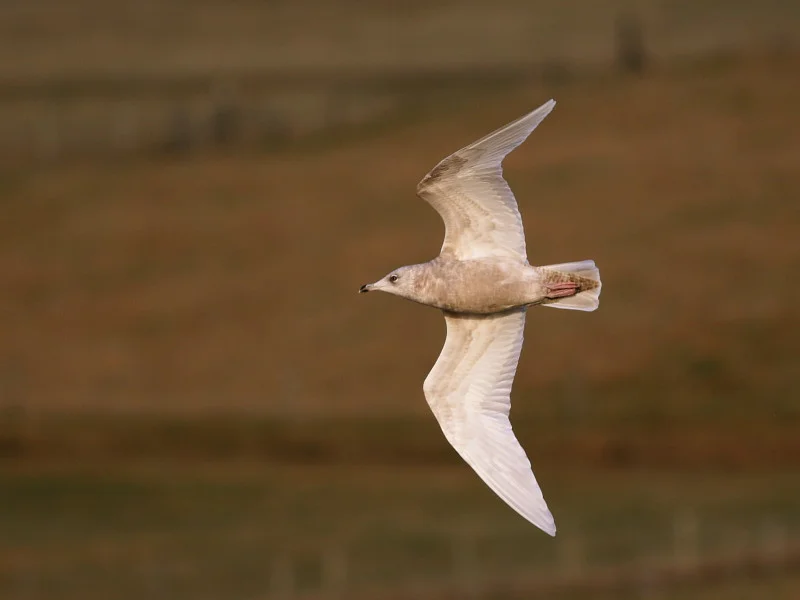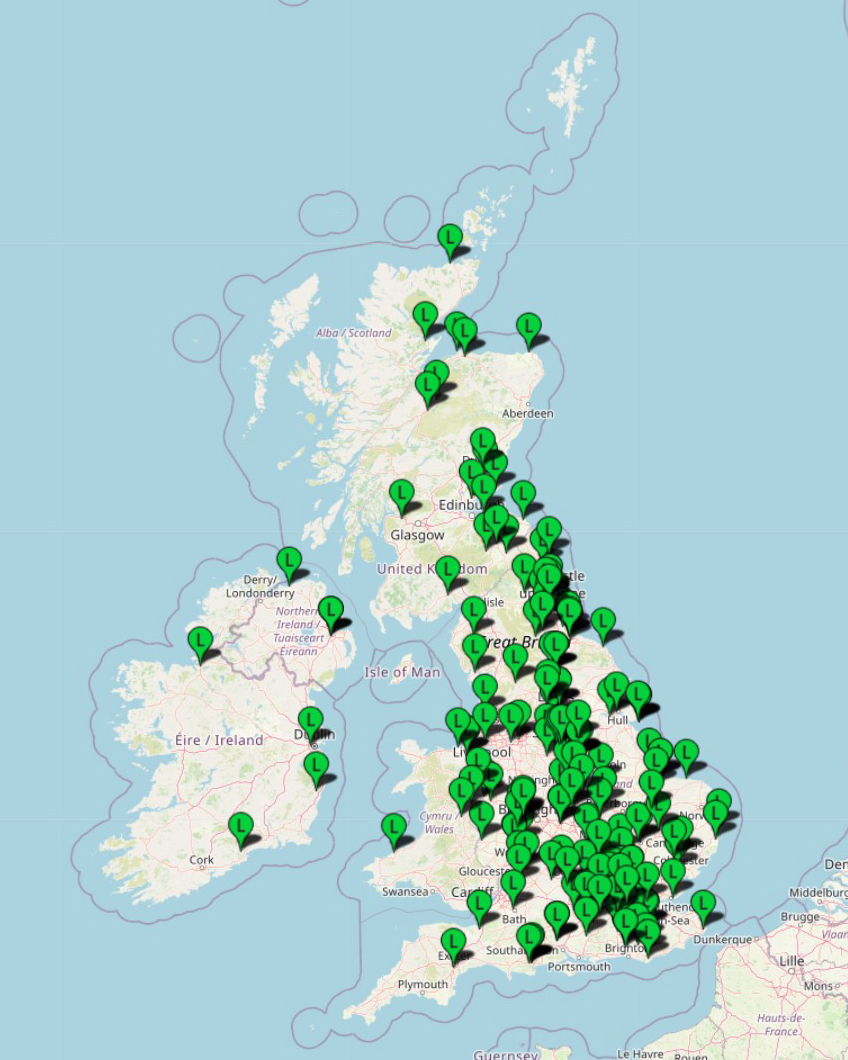Storms Isha and Jocelyn arrived in quick succession at the start of the week, dousing Britain and Ireland in widespread wind and heavy rain. Thankfully, conditions had improved somewhat in time for the RSPB's Big Garden Birdwatch over the weekend. The event is notorious for producing a rare garden find or two and, after the greatest American autumn of all time, might we be set for the discovery of a 'funny-looking bird' in someone's garden?
The most noteworthy claim of the week concerned a Whistling Swan with Bewick's and Whooper Swans on the fens along the Norfolk-Cambridge border on 22nd and 27th. Whistling Swan – the nominate Nearctic subspecies of Bewick's Swan – is a mega-rare visitor to Britain and Ireland, with only three birds accepted as wild. The last concerned a one-day adult at Nocton Fen, Lincolnshire, in January 1998, though the lack of any since is perhaps unsurprising when you consider the rapid decline of Bewick's Swan as a wintering species across Britain and Ireland in recent years. The proportion of yellow on the bill is the main identifying feature: Bewick's should have no fewer than 22.9% yellow while Whistling should show no more than 15.8%.
Holkham Bay, Norfolk, has offered a scoter extravaganza in recent weeks, with thousands of assembled Common Scoter joined by a drake Surf Scoter and a bumper 52 Velvet Scoter. On 27th, an even rarer treat was found – a drake Black Scoter. It is the first Norfolk record of this rare Nearctic relative of Common Scoter.
Very many thanks to @mcbuckland for another superb find: Norfolk's first ever Black Scoter was at a challenging distance this morning, as the scoters always are in Holkham Bay and most other places! Another stunning pic or two on https://t.co/Z1h7nSP3li shortly! pic.twitter.com/XmCa3Cn5ak
— Steve Gantlett (@CleyBirds) January 28, 2024
White-billed Divers are always rare commodities away from select coastal areas of Scotland, particularly in southern England. A juvenile at Southend-on-Sea, Essex, therefore, made for a rare treat. It was present at close range off the town's famous pleasure pier on 25-26th. Twitchers so inclined could save their legs and opt for a short ride on the Southend Pier Railway – at 2.16 km, the pleasure pier is the world's longest. It is just the second county record, with the only other concerning a single-observer coastal flyby. Another continued off Shetland.

White-billed Diver (left) with Great Northern Diver, Southend-on-Sea, Essex (Vinny Kinsler).
The adult drake Canvasback was reported at Abberton Reservoir, Essex, for the first time since 7 January, though it was thought unlikely to have gone far. This expansive reservoir contains large areas off limits to birders. Disappointingly, however, there would be no conclusive sign of the nearby Northern Waterthrush after 22nd.

Canvasback (front bird) with Common Pochard, Abberton Reservoir, Essex (Ian Curran).

Northern Waterthrush, Heybridge, Maldon, Essex (Bill Patterson).
The White-winged Scoter, Pied-billed Grebe and American Wigeon were all reported from Inishmore, Co Galway, and a new drake King Eider shared the Lothian coastline with a Surf Scoter – the latter one of five off Britain and Ireland. Four American Wigeon elsewhere included the relocated 'Storm' variant at Burton Mere Wetlands RSPB, Cheshire, from 22-24th.

American 'Storm' Wigeon (centre) with Eurasian Wigeon, Burton Mere Wetlands RSPB, Cheshire (John Tymon).
Another interesting week for Ferruginous Ducks saw two new birds found – a drake in Warwickshire and a female in Cambridgeshire – bringing the overall total to seven. Disappointingly, closer views of the Gloucestershire female saw it reidentified as a Ferruginous Duck × Common Pochard hybrid. Eight Lesser Scaup remained in situ, with five at Lower Tamar Lake, Devon, the largest flock. Additional totals comprised 15 Green-winged Teal, 18 Ring-necked Ducks and 55 Smew.

Ferruginous Duck, Snaresbrook, London (Robert Inns).

Green-winged Teal (left) with Eurasian Teal, Swine Moor, East Yorkshire (Roger Hackney).
Red-breasted Geese included a first-winter back on the north Norfolk coast and adults in Northumberland and Lancashire. Three Snow Geese were in Scotland, Co Clare boasted a new Cackling Goose at Doonbeg and at least eight Grey-bellied Brant were still in the Dublin suburbs.

Snow Goose (front bird) with Pink-footed Geese, Dingwall, Highland (Chris Baines).
The Clyde Ring-billed Gull returned after a 10-day absence. Up to two birds were in Cornwall, with others lingering in Cos Louth and Cork. A popular third-winter Kumlien's Gull at Widnes, Cheshire, was one of four in Britain. These were joined by 47 nominate Iceland and 25 Glaucous Gulls.

Iceland Gull, Easter Loch, Unst, Shetland (David Cooper).
All three Pallid Harriers were logged and a juvenile Rough-legged Buzzard was again over moorland near Kirkbymoorside, North Yorkshire. An unringed White Stork attracted some attention at Little Cornard, Suffolk, while amazingly a wintering Dutch-ringed White-tailed Eagle down the road at Stowlangtoft was joined by a second bird from 27th. That bird, 'G625', was a male born in West Sussex last year – the first successful breeding in England in 240 years.

White Stork, Cornard Mere SWT, Suffolk (Stuart Read).
Three Great Grey Shrikes all concerned lingering birds, with two Little Buntings again at Tremethick Cross, Cornwall. Rarity news saw the adult male Black-throated Thrush still in East Yorkshire and a Central Asian Lesser Whitethroat candidate still in a Bristol, Somerset, garden. Shore Lark numbered 24 across five sites.

Great Grey Shrike, Doddington, Lincolnshire (Gazzm).

Shore Lark, Thornwick Bay, East Yorkshire (Paul Bateson).
Over 380 reports on the BirdGuides sightings pages during the week signifies that the Waxwing invasion of 2023-24 is far from over yet. Birds were widespread across all areas of England away from the south-west, with smaller numbers in Wales, Scotland and Ireland.

Waxwing, Downham Market, Norfolk (David McGough).

A map of Waxwing sightings from 22-28 January (BirdGuides.com).
Lingering shorebirds comprised the East Sussex Long-billed Dowitcher and Somerset Kentish Plover, plus Lesser Yellowlegs in Lincolnshire and Co Louth. Four Grey Phalaropes included one at Longhaugh Point, which became just the fourth record for Clyde and second for Renfrewshire.

Lesser Yellowlegs, Frampton Marsh RSPB, Lincolnshire (David Carr).
Western Palearctic
Poland delivered a shock with the discovery of a Spotless Starling at Tychy from 23-25th – an unexpected national first. Perhaps slightly more expected – if equally notable – was Italy's first Black-faced Bunting near Varese from 25th.

Spotless Starling (top bird) with Common Starlings, Tychy, Śląskie (Arkadiusz Wuwer).
A Zitting Cisticola was again on Alderney, a Siberian Buff-bellied Pipit continued in the Netherlands and two Ross's Geese were still in Belgium. Nearctic visitors to the region included the Barcelona, Spain, White-throated Sparrow, and both a Green Heron and Double-crested Cormorant on Faial, Azores.
An adult Cape Gull visited a rubbish dump at Llanos Pelados, Fuerteventura, on 25th, with the nearby Red-billed Tropicbird still proving a hit with tourists. Sal, Cape Verde, retained its White-faced Whistling Duck for another week.
- Keep up to date with by-the-minute sightings updates of rarities, migrants and significant birds in your local area at www.birdguides.com/sightings or via the BirdGuides app. New users are entitled to a one-month free trial. Sign up for our weekly newsletter.


